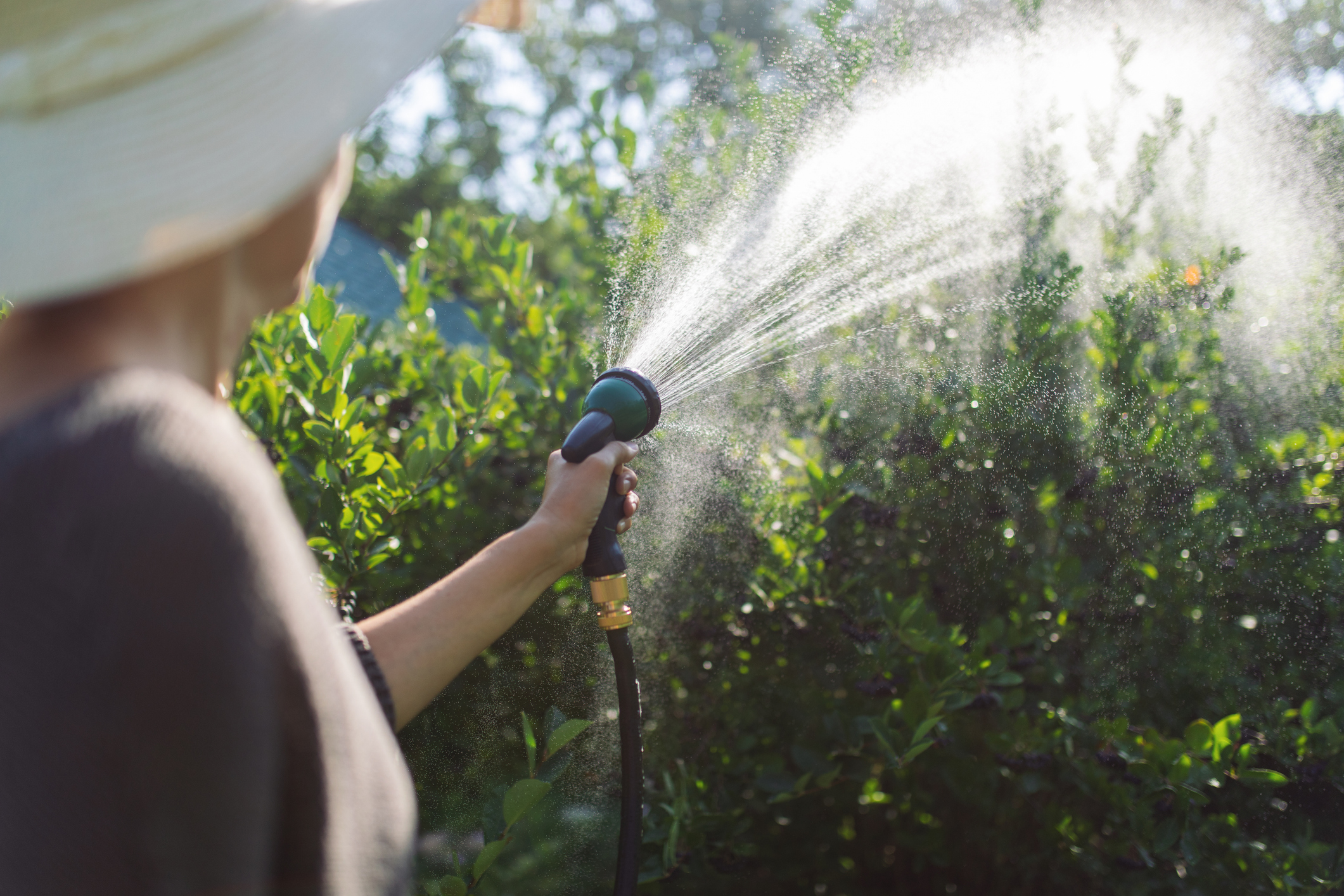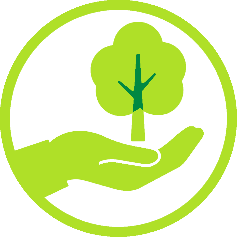
What is an urban forest?
Urban forestry involves the sustained planning, planting, protection, maintenance and care of trees, greenspace and other natural assets in and around communities.
Urban forestry practices are relevant for communities of any size. The practices are similar for rural, small, medium and large communities—anywhere people live and interact with trees or forested areas, including where people manage social, economic and environmental policies and programs.
While there are many definitions of the term urban forest, GMF and Tree Canada define urban forests as encompassing:
- street trees
- trees, shrubs, plants and other vegetation in parks and other public spaces
- trees in woodlots
- trees on private, commercial and institutional lands within a set boundary
Benefits trees provide to communities
Trees are a vital natural asset that provide many services to communities. They are the most direct and cost-effective means to cleaning the air—capturing carbon and removing pollutants. In municipalities, they provide a lot of other benefits to residents, including:
- reducing temperatures
- reducing flooding
- providing habitat for wildlife species
- supplying food
- beautifying our landscapes
- improving our mental and physical health
- calming traffic, and more.
The status of urban forests in Canada
In most Canadian towns and cities, individual trees and tree canopies are facing many threats to their survival. They are threatened by residential, industrial and commercial development, the expansion of roads and other infrastructure, natural disasters caused by a changing climate and invasive species and pests.
Many local governments want to take steps to address these challenges, recognizing the risk of these potential losses and the important social, financial and ecological benefits of growing and sustaining healthy urban forests. A local government that recognizes the value and benefits of trees treats them with the same care as its built infrastructure.
Characteristics of a healthy urban forest
A healthy urban forest has an abundance of trees that are spread out equitably in all neighbourhoods. Trees should be varied in species, sizes and ages. They can be cared for by residents, community groups and local governments. A healthy urban forest has the space, conditions and support to grow and thrive.
Diversity is key. Healthy urban forests require many types of tree species to guard against the diseases, pests and natural disasters that can kill off a single species. It’s also important to have trees of different ages to ensure forest succession and ongoing benefits.
Large trees offer greater environmental, social and economic benefits than smaller ones. Large trees are more impactful in reducing the risks of flooding, removing carbon, cooling the air, and other benefits. As a result, the asset value of a large tree is higher. Although mature trees provide more benefits, younger trees are necessary to ensure the long-term health of the ecosystem. It is important to have a strategy to protect mature and large trees while ensuring new trees are planted and become well established.
Planting native tree species is considered best practice in most cases because they are adapted to local conditions. They are often more resilient to the climate conditions of the region and support existing biodiversity. However, some non-native species are more suitable in certain locations to withstand, and even thrive in harsh urban conditions.
Invasive trees and other plant species known to spread and outcompete native species should never be planted. Plans should be in place to control or remove them to preserve forest health.
Fighting climate change with trees
While climate change and environmental degradation are global issues, local governments should be empowered to act locally to address these shared concerns. Given the growing impacts of climate change, trees and urban forests can help towns and cities adapt to changing weather patterns and periods of extreme flooding and heat waves. Tree planting and urban forest management are effective nature-based climate solutions that work to mitigate multiple climate risks facing communities.
Climate change is adversely affecting urban forest health, but tree planting projects can be designed to increase resilience to climate change. Communities can increase forests resilience to climate change by planting:
- resilient species that can withstand warming climates
- fire-resistant species in fire-prone areas
- species that are resistant to or not threatened by pests and diseases
- a variety of tree species to increase biodiversity
- high-quality stock
Forest restoration and planting in environmentally degraded areas also helps to regenerate the health and resilience of the landscape.
Addressing tree equity
Urban forests have a positive impact on our health and well-being. People living in neighbourhoods with an abundance of mature trees and other vegetation experience more benefits than those who live or work in neighbourhoods with low tree canopy cover (fewer trees). In areas with high canopy cover, the air is cleaner, the temperature is lower, and the greener landscapes foster better mental and physical health. It is important to ensure that trees and canopy cover are distributed in all neighbourhoods, so that their benefits are spread to all communities.
Research shows that neighborhoods with low-income residents and racialized communities often have lower tree canopy cover. As a result, those communities are more susceptible to the urban heat island effect, flooding and other impacts of climate change. Tree planting projects should focus on increasing access to the benefits of urban forests by planting in areas with disproportionately low canopy cover and where evidence demonstrates high susceptibility to climate change impacts.
Communities should centralize tree equity when making decisions about their urban forests. You can do this by identifying and setting equity-related goals in your urban forest planning and supporting the planting of new trees in the communities that need them most.
Managing urban forests
Urban forests are generally managed through an urban forest management plan. Urban forest management refers to the activities and strategies to sustain and grow trees in communities to ensure long-term social and environmental benefits.
Urban forest management is the work that goes into planning and putting measures into place to ensure that trees will always be part of our landscapes. It’s about being proactive and ensuring thought and action go into caring for trees in our communities.
Key players in urban forest management
Trees are a natural asset, and they must be cared for to ensure that your community can benefit from the services trees provide. Foresters, urban planners and other professionals who work for local governments are responsible for the overall planning and maintenance of the urban forest, but it's the local government’s elected officials who determine the budget and policies to preserve and enhance trees in their communities.
Residents and other landowners play a role in urban forest management too. A large portion of trees and other vegetation grows on private property in most communities, so local governments should engage residents in decision-making and involve them in efforts to protect and maintain trees. Community groups play a key role by advocating for tree preservation, being involved in stewardship activities or educating the public on the value of trees.

Vital elements for effective urban forest management
Local governments should set a vision for their urban forests—one that values community trees and greenspaces and sets out to protect, preserve and grow the urban forest into the future.
To help guide them, local governments can create an urban forest management plan that sets out objectives and targets, describes roles and responsibilities of staff and defines other plans and policies needed to support implementation. The plan provides a roadmap for achieving the vision for the urban forest.
Where possible, local governments should have trained staff or hire contractors such as Registered Professional Foresters and/or certified arborists with expertise in looking after trees and establishing bylaws and mechanisms to protect trees and greenspace. These individuals will play a key role in implementing the urban forest management plan and ensuring objectives are met successfully.
The various departments that impact the state and health of community trees (e.g., public works, parks and planning) can develop and enforce complementary policies and programs to support the vision for the urban forest. Communication is important too. It’s vital that residents understand and support local efforts to protect and care for trees and do the same for trees on their properties.
A good first step is to create an inventory of the trees in your community to set a baseline for the current state of the urban forest. This is useful for long-term planning and setting targets for canopy cover and other priorities.
Strategies for protecting existing trees
Local governments can preserve the trees in their communities by crafting and enforcing tree-protection bylaws for trees on private property and by developing regulations that specify tree-protection measures for new developments and infrastructure projects. Staff play a significant role in preserving trees by carrying out ongoing maintenance activities, including watering, pruning and ensuring proper care for trees so that they can thrive.
Local leaders can engage residents about the value and importance of trees to foster public support for investing in the ongoing care and expansion of the tree canopy. Incentive programs and public engagement campaigns can help local governments inform residents of the economic, environmental and social benefits of trees.
Across Canada, communities are working together to re-shape their neighbourhoods by planting trees to increase the tree canopy on their properties. Beyond individual trees, municipalities can collaborate with residents or community groups to conserve woodlots or forested areas through mechanisms such as conservation easements, developer guidelines and land use or zoning policies and bylaws.
Next steps
- Review Tree Canada’s Compendium of Urban Forest Management Practices for more information and resources on developing a robust urban forestry program in your community.
- Explore GMF’s Funding opportunity finder to discover what type of funding is available for your local tree projects.
This resource was created in partnership by Tree Canada and FCM’s Green Municipal Fund for the Growing Canada’s Community Canopies initiative, which is delivered by the Federation of Canadian Municipalities and funded by the Government of Canada.



 Benefits trees provide to communities
Benefits trees provide to communities Addressing tree equity
Addressing tree equity  Managing urban forests
Managing urban forests  Key players in urban forest management
Key players in urban forest management  Vital elements for effective urban forest management
Vital elements for effective urban forest management  Strategies for protecting existing trees
Strategies for protecting existing trees